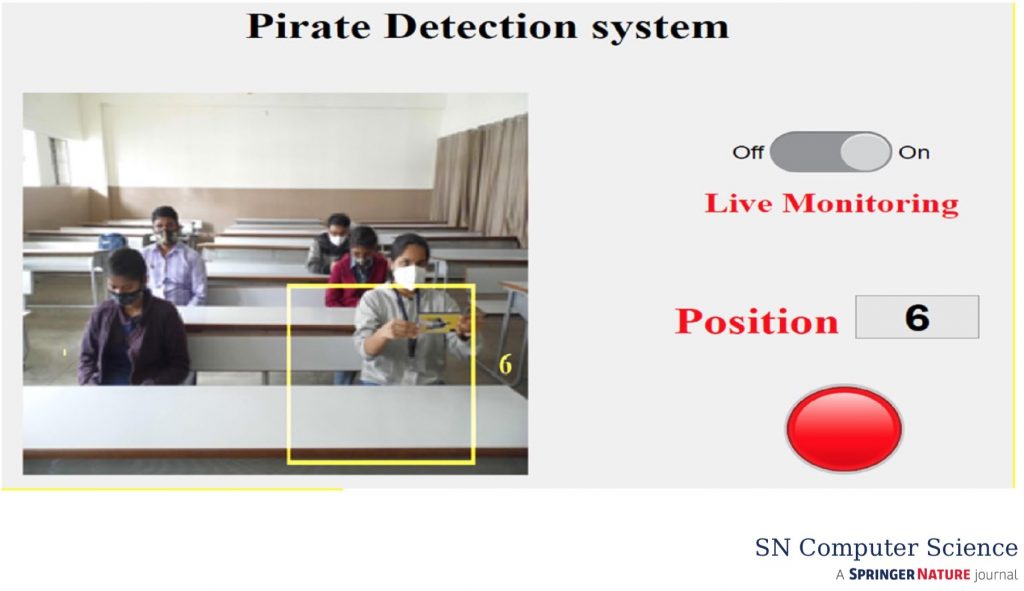A 2020 paper published in late December 2021 examines the current ‘state of the art’ for detecting in-theatre camcording by a pirate, implementing in-theatre watermarking, and for compromising the quality of the video that the pirate records. It proposes a new method that uses artificial intelligence (AI) and machine learning (ML) to develop and train a model that can automate the process.
The model is a work-in-progress, as the test documented in the paper is with an audience of just six people. Also, according to the authors, “Exploitation of thermal imagery, large datasets, coverage of whole real-time theatre, (and) employing hybrid features may improve the accuracy of the model and is the future work.”

State of the Art
One way to compromise the quality of video being recorded by a pirate is to emit infrared light from behind the theatre screen, or to integrate IR emission with the projector. Infrared is not detectable by the human sensory system but it compromises the quality of the recorded content.
The predominant method used to identify a pirate in a theatre has been to insert watermarks that can be extracted and evaluated either after the fact or ideally, in realtime. Watermarks can consist of a pattern that is inserted in movie frames. A watermark can be in a standardized format, although a technique that embeds QR codes instead of watermarks is also described.
Several proposed approaches for estimating the pirate’s position in the theatre are described as well, including geometric analysis of an extracted watermark and the evaluation of GSM transponders in a mobile phone.
One way to minimize the potential that an in-theatre watermark could degrade the (legitimate) moviegoer’s quality of experience is to take advantage of high frame rates (TPVM) that the human visual system can’t resolve, so that the watermark frame is effectively invisible.
New approach uses AI
The paper contends that while the approaches that they describe as ‘state-of-the-art’ are effective, they still require constant monitoring by a person in a surveillance room.
To address this shortcoming, the paper proposes a Support Vector Machine (SVM) model, which can automate the process of detecting piracy, invoke quality reduction for the video being recorded by the pirate, and raise a piracy alert.
The authors contend that their technique can detect the presence of a mobile phone with a high level of confidence, and estimate its location in the theatre. Location estimation uses an image analysis technique called AlexNet, named after Alex Krizhevsky, one of three team-members at the University of Toronto that published a paper about the technique in 2012.
The model is described in mathmatical detail.
Read full December 2021 article
- Online version (with links to charts and tables)
- Offline version (.PDF with embedded charts and tables)
Article source: Patil, R., Vishal Goutham, N., Sunil Kumar, G.R. et al. AlexNet Based Pirate Detection System. SN COMPUT. SCI. 3, 108 (2022). https://doi.org/10.1007/s42979-021-00951-8
Why it matters
In-theatre watermarking complements other piracy-detection and anti-piracy techniques that are implemented elsewhere in the overall lifecycle of a media asset, such as in pre-release (production and post), through a breach in a distributor’s processing or storage facility, in distribution, or at a playback end-point. By embedding unique data into movie content at one of a movie’s most widely-used capture points, watermarking can help forensic analysts isolate piracy occurrances that happen before the stolen asset enters distribution.
While this article cites techniques documented in reference materials that go back to 2012, the concepts themselves are much older. In 2004, a company called Trakstar demonstrated a similar solution called Pirate Eye, which had two components: one to detect recording devices in theatres, and the other to emit audio watermarks unique to individual movie showings. [ Note: At the time of this article, a company called “Trakstar” was offering employee applicant tracking and performance monitoring solutions for corporate enterprises. ]
Other in-theatre techniques include the use of night-vision head-sets and the monitoring of facial expressions and body positions.












